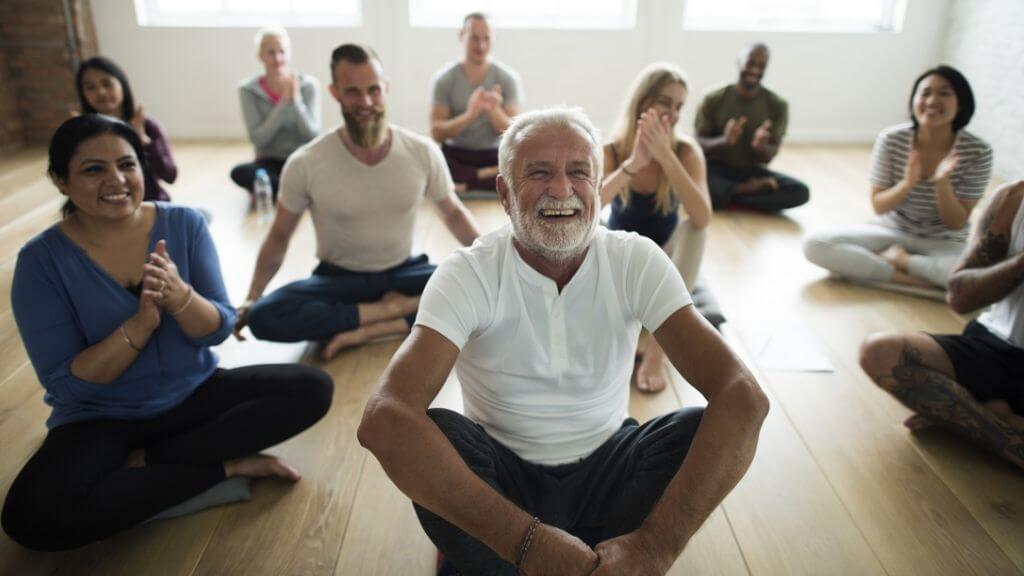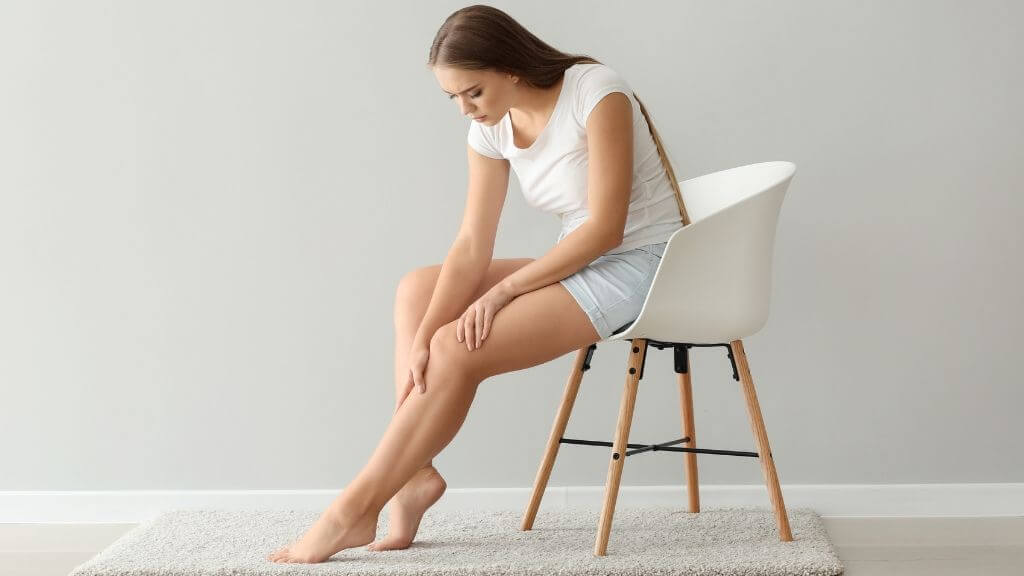People who suffer from chronic pain can often benefit from a customized treatment cocktail that can include a few different medications and supplements, some exercises and physical therapy, and even alternative treatment options.
Not one treatment plan fits all, which is why many people with pain issues like to experiment with new alternatives to see if a combination of supplements, exercises, and therapy works best to alleviate their pain.
Trying some of these gentle yoga poses with all-natural turmeric balm is one new approach we recommend.
Why Yoga for Pain Management
Stretching the right muscles in a gentle manner helps promote joint mobility and reduces discomfort. Yoga is an excellent way to manage pain on a daily basis and to treat flares when they occur.

By practicing these stretches daily, you’re increasing physical activity, flexibility, and strength. With some joint conditions, inflammation may be to blame for the pain, but yoga can help reduce inflammatory attacks naturally to relieve pain.
In addition, the study found that yoga lowered the level of cortisol, the stress hormone. Lowering cortisol can have a positive impact throughout the body, and the decreased level of stress makes managing pain easier.
The best part of using yoga stretches as part of your treatment plan is that you can do it at home. You don’t need to go to a class or have special equipment. Simply focus on your breathing, the movement you’re doing, and being aware of the moment.
Yoga Stretches for Pain Relief
It’s best to try these stretches for the first time at a moment when you’re feeling your best so you get an idea of how to do them with a broader range of motion. Remember, always be gentle and never force a stretch.
1. Hand Yoga
♦ Start by making fists with both hands, and then open them fully.
♦ Make fists again and release your fingers one at a time, then reverse that and pull the fingers back in, one at a time.
♦ Continue opening and closing your hands while circling your wrists.
♦ Keep doing that and move your arms out to your sides so you can roll your arms up to the shoulder.
2. Foot Yoga
♦ Sit in a chair, so your bare or stockinged feet rest flat on the ground.
♦ Rock your feet back and forth, from heel to toe and vice versa, holding for a count of 3 at the toes and heels.
♦ Try curling your toes in, one at a time, and then release in the same way, much like with the hand/finger exercises.
3. Seated Twist
♦ Sit in a chair with your feet flat on the ground and your spine straight, and not resting against the backrest.
♦ Reach your right hand to your left knee, and reach your left hand behind you so your torso twists. Don’t over-twist or stretch here, do just what’s comfortable.
♦ Inhale and exhale deeply, focusing on the breath and relaxing into the stretch. Take a couple of breaths, and then on the exhale, return to a front-facing position.
♦ Now try it on the other side.
4. Shoulder and Neck Stretch
♦ Stay seated in the chair with good posture. Imagine a string pulling you up through your spine and the top of your head.
♦ Inhale and tuck your chin down slightly, and look to the right while you exhale.
♦ Inhale and return your head to the center.
♦ Exhale and look to the left.
♦ Inhale and return your head to the center.
♦ On the next exhale, drop your right ear toward your right shoulder.
♦ Inhale and return your head to the center.
♦ Exhale and do the same on the left side.
Adding Turmeric to Pain Management
A turmeric balm applied topically to your targeted pain regions while working in conjunction with yoga stretches can amplify your relief. Curcumin, the active ingredient in turmeric, can help reduce joint discomfort and help maintain strong cartilage while promoting better musculoskeletal health.
If you’re going to make your own curcumin balm at home, it is important to remember that turmeric is not soluble in water, so you need an oil carrier for proper absorption. Virgin olive oil, virgin coconut oil, and clove oil are ideal carriers.
Try mixing two tablespoons of turmeric with one of the oils mentioned above. Depending on the oil you choose, you may need to warm the oil slightly to make it easy to mix.

Apply this balm to the area with a gentle massage. You may want to cover the area with a warm washcloth while it sits for 20-30 minutes. Then rinse clean and try your yoga exercises.
The Bottom Line
Finding an effective way to manage your pain is essential for mobility and healthy aging. There are several pain management approaches, so you want to try and mix up your methods and try new things until you find the treatment that works best for you.
Yoga is an excellent addition to support joint mobility and comfort because it offers so many benefits, both physically and mentally. It’s also something you can adjust to fit your pain level on that particular day. Trying a few stretches that target your problem areas can help you learn to control pain and strengthen the area.
Adding curcumin as a soothing balm to your yoga and pain management approach may give you that extra level of inflammation control that helps you get through the day. There’s no need to buy a curcumin or turmeric balm when you can make one yourself.








